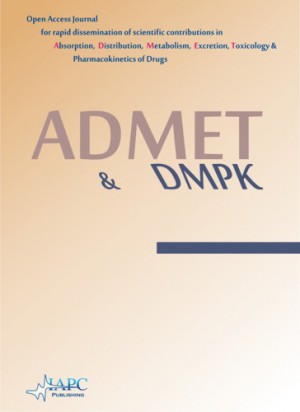
ADMET & DMPK
Yazarlar: Jenna L. Voellinger, Edward J. Kelly
Konular:-
DOI:10.5599/admet.2.4.280
Anahtar Kelimeler:Drug metabolism,ADME,In vitro
Özet: Primary human hepatocytes are commonly used to evaluate liver drug metabolism and toxicity. Pluripotent stem cell derived hepatocytes (SCDHs) have the potential to overcome access and function-related limitations associated with primary hepatocytes. SCDHs may also provide an improved system for evaluating genotype-phenotype relationships, e.g. cytochrome P450 (CYP) gene polymorphisms and their impact on drug metabolism and toxicity. However, in order for SCDHs to become routinely used in preclinical drug metabolism and toxicity screening, they must demonstrate reproducible activity of drug metabolism proteins, particularly the oxidative CYP enzymes. We characterized the differentiation status of SCDHs, with emphasis on the expression and functional capacity of drug-metabolizing enzymes, and genetically profiled the commonly used WiCell® hESC lines, focusing on CYP2D6 in our analysis. An assay of enzymatic function in SCDHs using a CYP cocktail assay designed to measure 8 different isozymes revealed only minimal activity for CYP3A, below that observed in primary hepatocytes. With regard to CYP2D6 gene copy number variation, we found the H1 line has only one gene copy, which also harbors the CYP2D6*41 splicing defect, predictive of a CYP2D6 poor/intermediate metabolizer. We identified no CYP2D6 gene duplications, indicating no representative ultra-rapid metabolizer. The H7 and H14 lines are heterozygous for the non-functional CYP2D6*4 variant resulting in a predicted intermediate metabolizer phenotype. In addition, we compared the penetrance of the CYP2D6*41 splicing defect in SCDHs and liver tissue via reverse-transcription PCR assay. We found incomplete penetrance of the CYP2D6*41 allele in liver tissue and variable penetrance in SCDHs. Based on gene expression profiling, SCDHs most closely resemble fetal hepatocytes, especially with regards to AFP, CYP3A7 and FMO1 expression. Finally, these studies indicate a low degree of genetic diversity of pharmacogenetically-relevant genes in the WiCell® hESC lines.